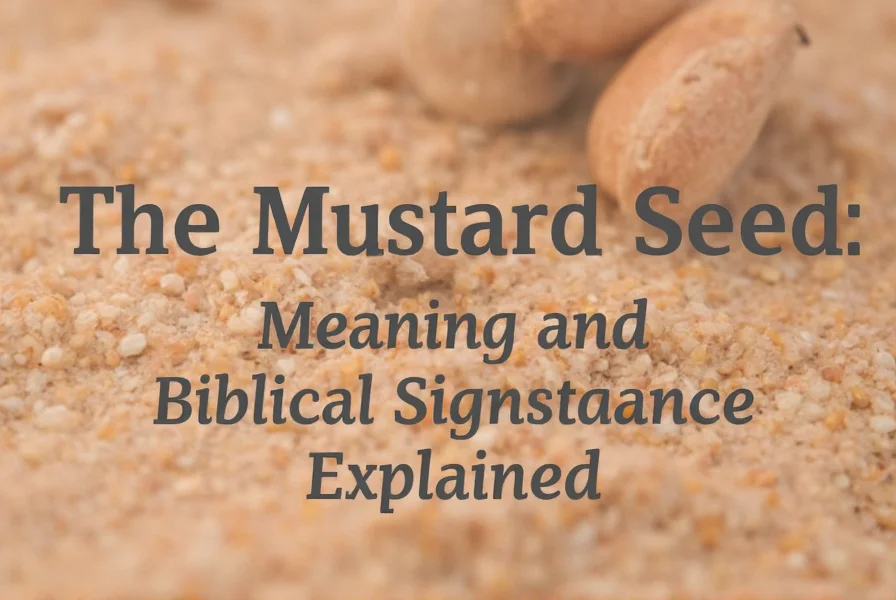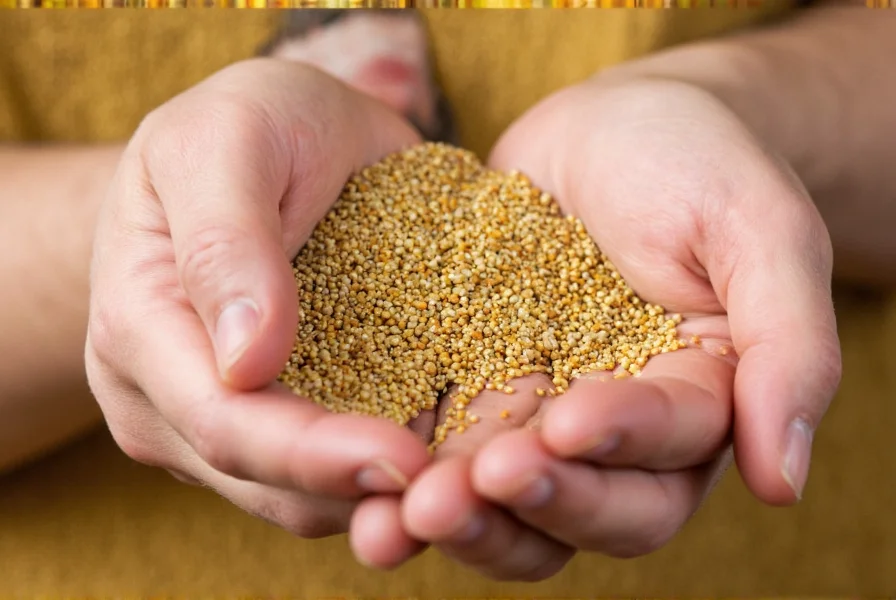The mustard seed parable stands as one of Jesus most enduring teachings about the nature of God's kingdom. When Jesus compared the Kingdom of Heaven to a mustard seed, he chose an object familiar to his agricultural audience yet profoundly symbolic in its implications. This seemingly simple story contains layers of meaning that have inspired theologians, farmers, and everyday believers for centuries.
Historical Context of Mustard Seeds in Biblical Times
In first-century Palestine, mustard plants grew wild and abundantly. The common species was sinapis nigra, or black mustard, which could reach heights of 6-10 feet—remarkable for a plant growing from a seed measuring only 1-2 millimeters. Jewish agricultural traditions documented mustard as a fast-growing plant that could quickly dominate a garden if not carefully managed.

The Parable Across Gospel Accounts
Each Gospel writer preserves this teaching with slight variations that enrich our understanding:
| Gospel | Key Phrasing | Unique Emphasis |
|---|---|---|
| Matthew 13:31-32 | "Smallest of all seeds... grows into a tree" | Kingdom's expansive nature |
| Mark 4:30-32 | "Becomes the largest of garden plants" | Unexpected transformation |
| Luke 13:18-19 | "Birds nest in its branches" | Inclusive community formation |
Symbolic Interpretation of the Mustard Seed
The mustard seed parable meaning extends beyond literal botany. In Jewish tradition, small seeds represented potential and hidden growth. Jesus subverted expectations by comparing God's kingdom not to majestic cedars but to a common weed. This teaching offered comfort to early Christians facing persecution—their small, seemingly insignificant movement would grow beyond imagination.
Modern biblical interpretation of mustard seed emphasizes three key dimensions:
- Radical growth—from microscopic seed to substantial plant
- Inclusive shelter—providing refuge for birds representing diverse people
- Unexpected transformation—a common weed becoming a protective tree
Practical Applications for Contemporary Life
Understanding the mustard seed parable explained reveals timeless principles applicable today. Many find inspiration in how small acts of faith, kindness, or service can generate disproportionate impact. Social justice movements, community initiatives, and personal spiritual journeys often embody this mustard seed principle—starting modestly but creating meaningful change.
When exploring what does the mustard seed represent, consider these practical applications:
- Begin initiatives without waiting for perfect conditions
- Value small contributions that collectively create significant impact
- Recognize that transformative change often emerges from humble beginnings
- Cultivate patience through seasons of invisible growth
Common Misconceptions About the Parable
Despite its familiarity, the mustard seed in the bible significance is sometimes misunderstood. Contrary to popular belief, the mustard seed wasn't actually the smallest seed in Jesus' time (orchid seeds are smaller). The teaching used hyperbolic language common in Jewish storytelling to emphasize potential rather than making a botanical claim.
Another frequent error involves interpreting the parable as primarily about individual faith. While personal faith matters, the original context focuses on the Kingdom of God's expansion—a corporate reality affecting communities and societies, not just individuals.
Comparative Analysis with Other Kingdom Parables
The mustard seed teaching forms part of Jesus' "kingdom parables" in Matthew 13, appearing alongside the parables of the sower, weeds, yeast, hidden treasure, and pearl of great price. Together, these stories present complementary perspectives on God's kingdom:
- The mustard seed emphasizes growth from small beginnings
- The yeast parable highlights transformative influence
- The hidden treasure illustrates inestimable value
This cluster of teachings provides a multidimensional understanding of the mustard seed kingdom of God concept—not as a single attribute but as a complex reality with multiple characteristics.
Enduring Relevance of the Mustard Seed Teaching
Two millennia after Jesus told this story, the mustard seed parable continues to resonate because it addresses universal human experiences: feeling small in a vast world, wondering if our efforts matter, and hoping for meaningful impact. The historical context of mustard seed parable reminds us that transformative movements often begin modestly—from early Christian communities to modern social reforms.
For those seeking application of mustard seed parable today, the teaching offers both comfort and challenge. It validates the importance of starting small while encouraging perseverance through seasons when growth seems invisible. This balance between present reality and future hope remains profoundly relevant across cultures and centuries.
What is the main message of the mustard seed parable?
The primary message is that God's kingdom begins with seemingly insignificant beginnings but grows into something substantial that provides shelter and blessing for many. It teaches that small acts of faith, when rooted in God's purposes, can generate extraordinary impact beyond initial appearances.
Why did Jesus use a mustard seed specifically in this parable?
Jesus chose the mustard seed because it was familiar to his audience as the smallest commonly known seed that produced a surprisingly large plant. This contrast between tiny origin and substantial outcome made it an effective teaching tool about the unexpected growth of God's kingdom from humble beginnings.
How does the mustard seed parable apply to modern life?
The parable encourages people to value small beginnings, whether in personal faith, community initiatives, or social movements. It teaches that meaningful change often starts modestly and grows through consistent effort, reminding us that our seemingly small contributions can create significant impact when aligned with larger purposes.
Is the mustard seed really the smallest seed?
No, the mustard seed isn't actually the smallest seed—orchid seeds are smaller. Jesus used hyperbolic language common in Jewish teaching of his time. The point wasn't botanical accuracy but emphasizing how something seemingly insignificant can produce remarkable results, which was the cultural understanding of his audience.
Where is the mustard seed parable found in the Bible?
The mustard seed parable appears in three Gospel accounts: Matthew 13:31-32, Mark 4:30-32, and Luke 13:18-19. Each version contains slight variations that provide complementary perspectives on the Kingdom of God's nature and growth.











 浙公网安备
33010002000092号
浙公网安备
33010002000092号 浙B2-20120091-4
浙B2-20120091-4